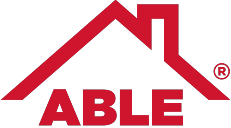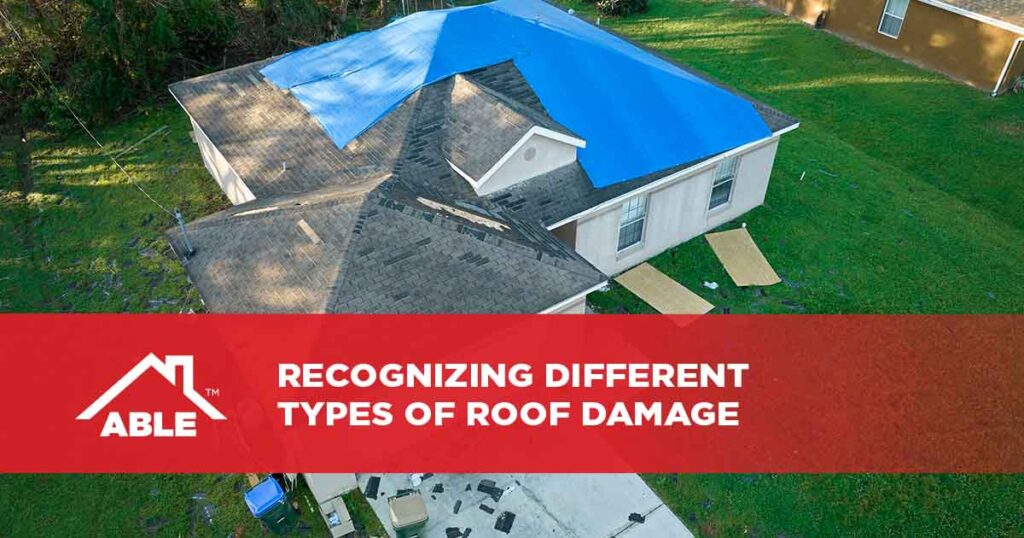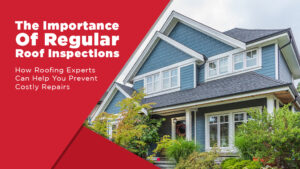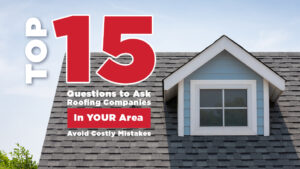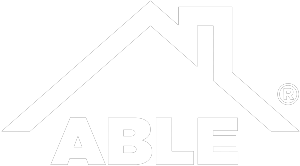Recognizing different types of roof damage is vital in maintaining your home’s integrity and value. From wind and hail to water leaks and structural issues, roof damage can stem from various external forces and regular wear and tear.
In this article, we’ll guide you through identifying signs of roof damage, including shingle, water, wind, hail, and structural damage. Taking these steps not only helps in preventing further damage but also ensures your home remains secure and protected.
Identifying shingle damage
Identifying signs of shingle damage is crucial in recognizing damage and preserving the integrity of your roof. Here are key indicators and types of damage to look out for:
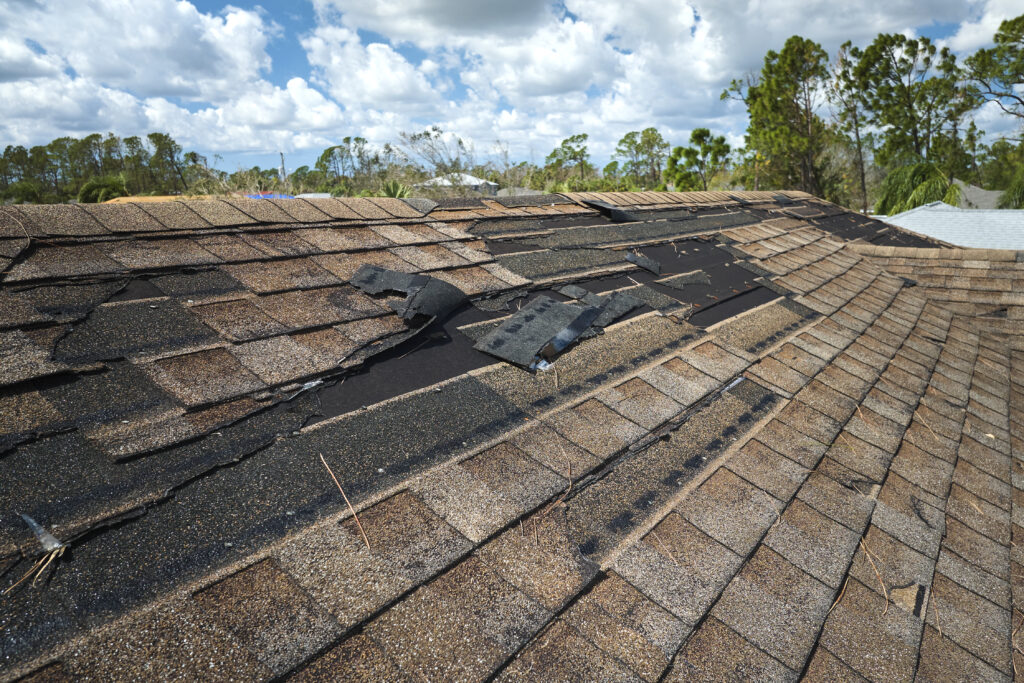
Common signs of shingle damage
- Missing or damaged shingles
- Curling edges on shingles
- Granule loss, indicated by dark spots or cracks
- Blistered, cracked, or flaking shingles
Hail damage specifics
- Dents or dings on roof vents, gutters, and flashing
- Bruised or dented shingles, which may not be immediately visible
- Cracked shingles from hail impact
Consequences of ignored shingle damage
- Water leaks and structural damage
- Increased susceptibility to water leakage
- Potential for water damage inside the house
Shingle damage can result from a variety of causes, including storms, hail, and general wear and tear. It’s important to regularly inspect your roof for these signs of damage to prevent further issues. Look for distorted, lost, or damaged shingles, which can leave your roof vulnerable to water leakage. Additionally, granules found at ground level after heavy rain indicate potential roof repair needs. Recognizing these signs early can save you from costly repairs in the future.
Recognizing water damage and leaks
Recognizing water damage and leaks early is essential in safeguarding your home from potential structural issues. Here’s how you can identify and address these concerns:
Visual inspection signs
- Interior: Look for water stains on walls or ceilings, a common indication of a roof leak. Damaged ceilings may exhibit holes, openings, or signs of rotting. In the attic or crawl spaces, water stains or dampness signal leaks.
- Exterior: Mold on exterior walls suggests prolonged water intrusion. Regularly inspect these areas, especially after severe weather events.
Detection tools and techniques
- Utilize a thermal camera to pinpoint leaks, either from inside your home or externally using a drone. This advanced method can detect moisture not visible to the naked eye.
- Conduct thorough inspections of the roof from the attic, focusing on areas around existing penetrations, as leaks often occur near holes or gaps.
Preventative measures and professional intervention
- Temporary solutions, such as using tarps or waterproof materials, can minimize damage until professional repairs are made. However, for a long-term solution, seeking professional assistance is crucial. Roofing experts can accurately diagnose the source of leaks and recommend appropriate repairs.
- Regular roof inspections, including checking for damaged shingles, open seams, and ensuring gutters are clear of debris, play a vital role in preventing water damage. Replace missing or damaged shingles promptly and seal any visible cracks.
Spotting wind and hail damage
Spotting wind and hail damage on your roof requires a keen eye and knowledge of what to look for. Here are key indicators to help you identify potential issues:
Wind damage indicators
- Creased shingles: Visible creases can indicate shingles have been bent by strong winds.
- Displaced shingles: Shingles may be lifted and resealed or completely blown off, leaving parts of the roof exposed.
- Fastener issues: Staples instead of nails may not hold shingles properly, leading to damage. A pulled fastener means the shingle won’t reattach, increasing vulnerability.
- Visible damage: Some wind damage, like torn shingles, can be easily spotted from the ground.
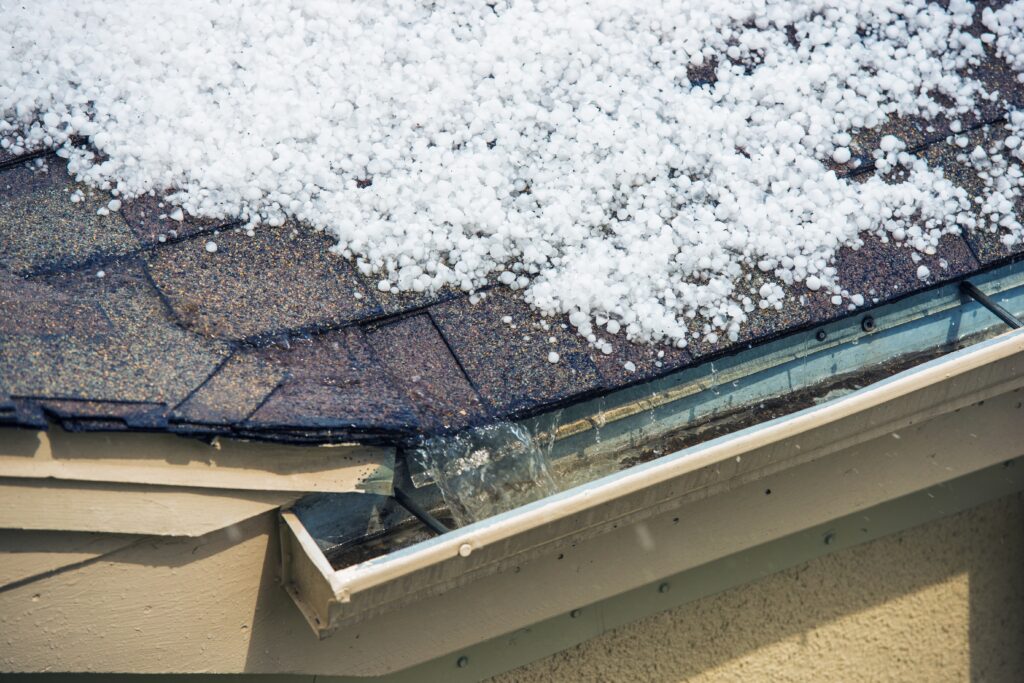
Hail damage signs
To check for hail damage from the ground, look for:
- Dings on downspouts
- Damage to garage doors, window screens, and painted wood surfaces
- Marks on electric meters, AC units, grills, mailboxes, and cars
Roof leak signs
- Loose step flashing and rusted chimney flashing: These can be precursors to leaks.
- Stains around bathroom fans: Often indicate water intrusion.
- Holes drilled on purpose or a missing gutter apron: Both can lead to water damage.
By understanding these signs, you can take proactive steps to inspect your roof for wind and hail damage. Early detection is key to preventing minor issues from becoming major repairs.
Detecting structural and flashing damage
Detecting structural damage and ensuring the integrity of your roof’s flashing are pivotal in maintaining your home’s safety and preventing leaks. Here’s how to recognize and address these issues:
Structural damage indicators
- Sagging or uneven roof lines: Often a sign of moisture buildup, weakening the roof decking and fascia boards.
- Horizontal lines on walls post-storm: These may indicate more severe structural damage.
- Broken gutters or debris accumulation: Points to improper water drainage, which can exacerbate damage.
Flashing damage signs
- Visible damage: Look for small holes, rust or corrosion, missing pieces, bends, cracks, or dents in the flashing.
- Internal leaks and mold: Staining on fascia boards or mold where the roof meets exterior walls can signal flashing failure.
- Worn or damaged siding/shingles: Adjacent to the flashing, this can indicate potential issues.
Preventative measures
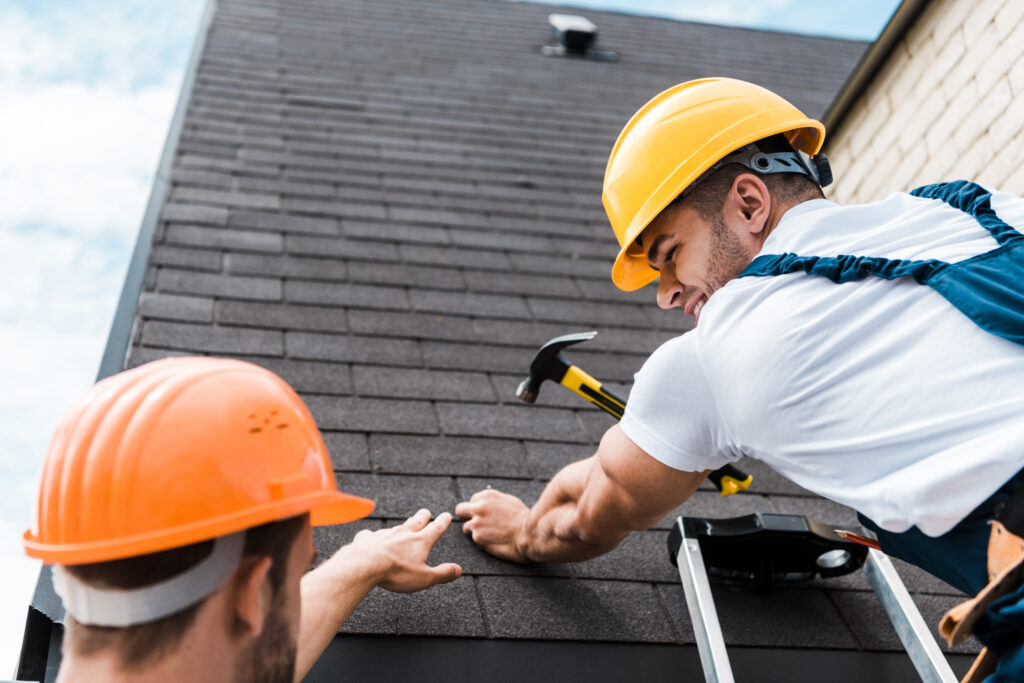
- Regular inspections: Conduct visual inspections twice annually, particularly in the fall and spring. For non-flat roofs, consider hiring a professional for a thorough assessment.
- Professional repair: If you detect flashing damage, enlist a professional roofer. Flashing is crucial in directing water away from vulnerable areas, installed at every intersection or joint on the roof, including vent pipes, roof ridges, valleys, dormer walls, and around skylights.
By staying vigilant and addressing these signs early, you can prevent larger, costlier problems down the line, ensuring your roof remains a reliable shield against the elements.
Conclusion
Through the exploration of various types of roof damage, including shingle, water, wind, and hail, along with structural and flashing damage, this article has provided a comprehensive guide to identifying and addressing the diverse issues that homeowners may face. Recognizing these signs early is pivotal in preventing further damage, thus maintaining the structural integrity and value of your home. Each segment has underscored the importance of vigilant inspections and timely intervention, emphasizing that knowledge and prompt action can significantly mitigate potential hazards.
In light of the topics discussed, it becomes clear that professional expertise is often necessary to accurately diagnose and effectively repair roof damage. Regular inspections and maintenance conducted by professionals play a critical role in prolonging the lifespan of your roof and ensuring the safety of your home. For those seeking professional guidance, do not hesitate to contact Able Roof today to schedule your free roofing estimate. Addressing roof damage proactively not only safeguards your home but also ensures peace of mind for you and your family, further underscoring the importance of staying informed and ready to act on the signs of roof damage.
